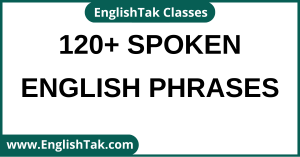![]()
Etiquette Manners & Greetings – Spoken English Day-2
Table of Contents
Etiquette Manners & Greetings – Spoken English Day-2. If you want to learn spoken English it becomes a must to know the manners and Etiquette. How you start talking with someone it shows your etiquette, you cannot start as you talk in Hindi. Suppose you are standing at the bus stop and you want to ask someone standing near you, bus number, time, routes etc. In Hindi we normally ask ‘कितने नंबर की बस लाल किला जाएगी’ but it is not so in English. First, you need to know how to start talking with a stranger. In this video I am going to cover ‘How to start talking in English, General greetings (Formal), General greetings (Informal), Greeting someone you haven’t seen for a long time., Useful responses when greeting people.’
-
When to Use Thank You & Thanks
Both are expressions of appreciation and gratitude. But Thanks is informal expression whereas Thank you is formal one.
Thanks is usually used with family and friends whereas Thank you is more polite and used with all in formal way.
Avoid using Thanks with your senior in the office or anywhere.
Various Ways to Say Thanks & Thank you
Thanks.
Thanks a lot.
Thanks very much.
Thank you.
Thank you very much.
Many-many thanks.
Thanks a million!
9.1 Thanks & Thank You
We use thank you and thanks to say that we are grateful for something:-
Thank you for this nice present.
Thank you for the flowers.
Thanks for this.
9.2 Thanks & Thank You
Say “Thank You” when you’re receiving a compliment.
You are looking gorgeous.
Thank you!
Your dress looks beautiful.
Don’t say:- Oh! This is not new or this is old. I bought it last year.
Say:- Thank you. I am glad you like it.
9.3 Thanks & Thank You
“Thank You” and “Thanks” are used to reply a polite question or comment.
A. How are you?
B. I am fine, thank you! And how about you?
A. Your video is worth watching.
B. Thank you, dear. You loved it.
9.4 Thanks & Thank You
“Thank You” & “Thanks” are used to a positive reply or response or when you receive something and “No thank you” & “No thanks” for negative reply or response or when you deny something.
Would you like to have a cup of tea?
Yes, Please. Thank you.
Would you like to have a cup of tea?
No, Thanks!
Note:- केवल Thank you or Thanks भी किसी चीज को स्वीकार करने के अर्थ में उपयोग किया जाता है।
9.5 Thanks & Thank You
“Thank you” & “Thanks” are used when somebody does your work or help you in any manner.
Here is your luggage!
Thank you!
I have done your work.
Thanks dear!
Suggested For You |
| Grammar | EnglishTak YouTube Channel |
| Spoken English | Videos |
| Ranjan Sir Blog | Join Our WhatsApp Group |
9.6 Thanks & Thank You
Thank you for + ing + other words
Thanks for + ing + Other words
Thank you for allowing me enter the class room.
Thanks for coming here.
Thanks for subscribing to my channel.
9.7 Reply of Thanks & Thank You
In formal reply to Thanks & Thank you, we generally say “Welcome or You are welcome.”
Formal
My pleasure. /It’s my pleasure.
Don’t mention it.
Not at all.
I’m glad to have been of help.
Glad to help.
I’m glad I could help.
It was not a problem at all.
It was the least I could do.
Informal
No problem.
Sure.
Certainly.
-
You first or After you
If you ever get a chance to say someone ‘ पहले आप! ’ Don’t say ‘you first’ always say ‘After you!’
Suppose you are in the lift with your senior or someone stranger but older than you. As soon as the lift stops and the door opens you want the senior to go out first.
Don’t Say:- You first!
Always Say:- After you!
-
I beg your pardon & Pardon please
“I beg your pardon” and “Pardon please” are used when someone speaks and you didn’t listen.
Don’t Say:- Please repeat! / Say again! / what did you say?
Always Say:- I beg your pardon. (मैं आपसे क्षमा चाहता हूँ।) / Pardon please!
-
How are you?
When you meet somebody you should ask ‘How are you? In it’s response one must say something.
A. How are you?
B. I am fine. / I am well. / I am good. / I am doing well. – Thank you! and how about you?
C. I am also fine. / I am also good.
D. I am so-so. (Not good or well)





